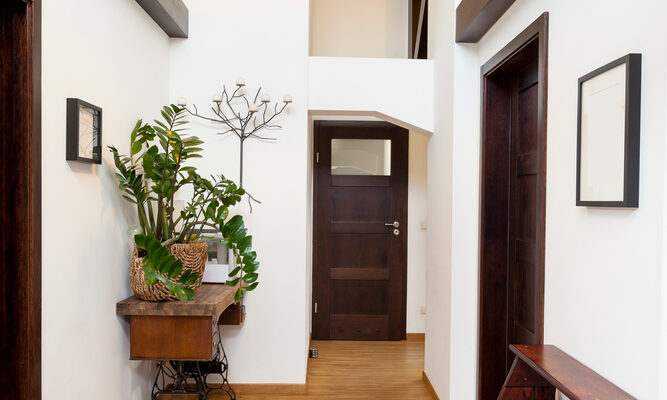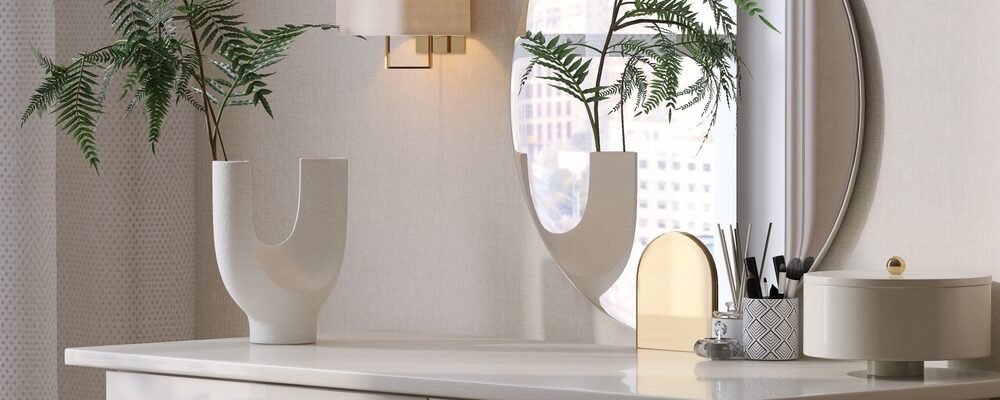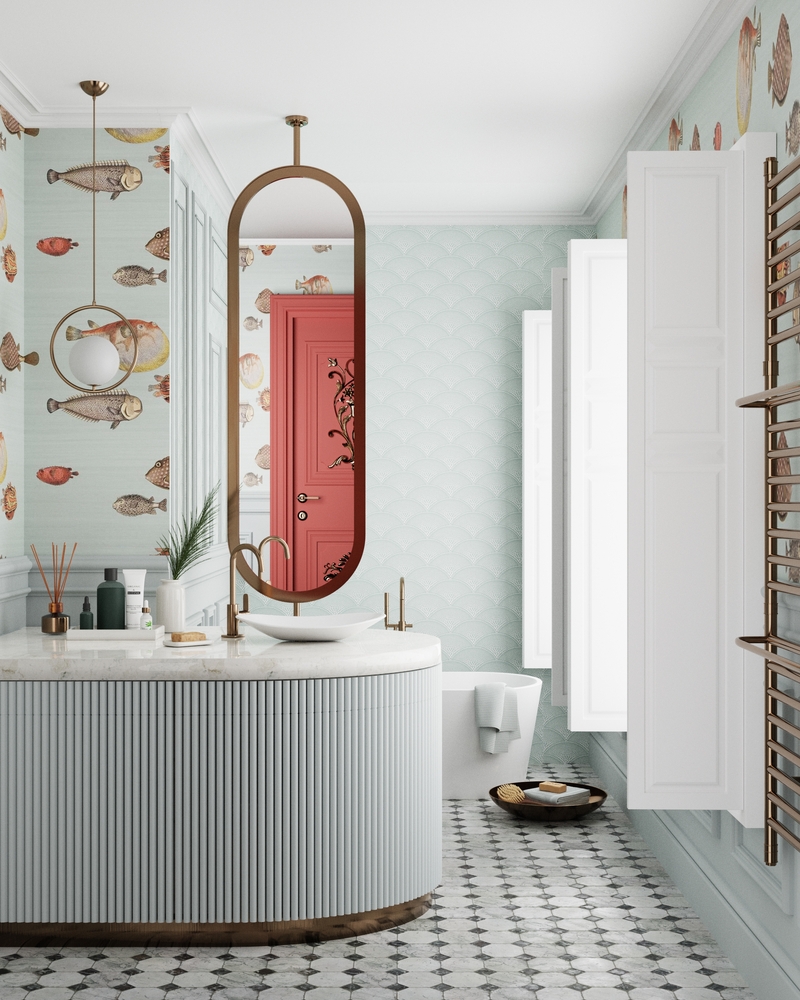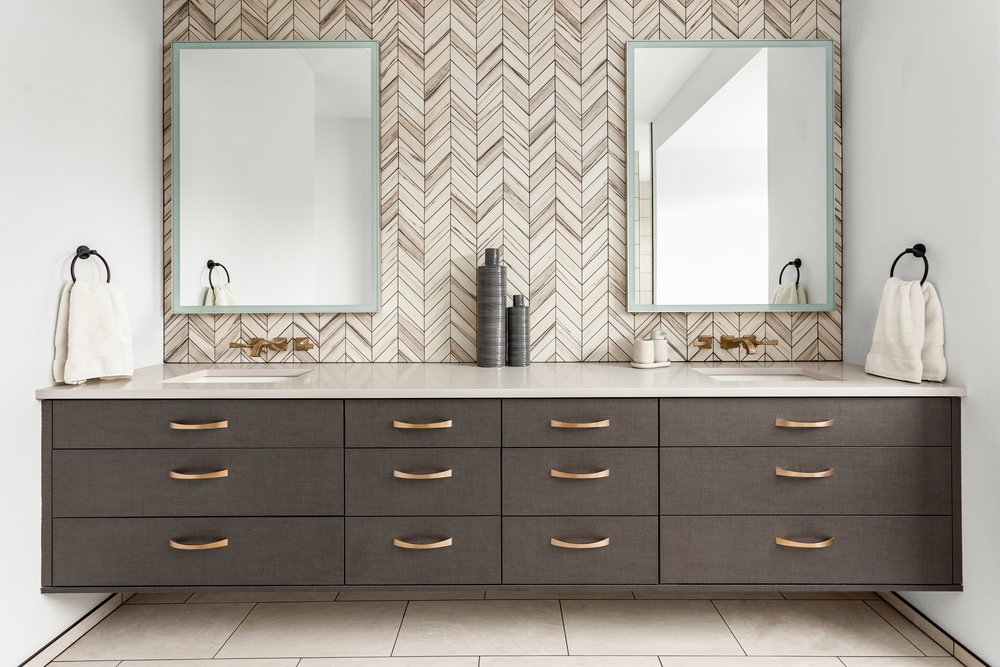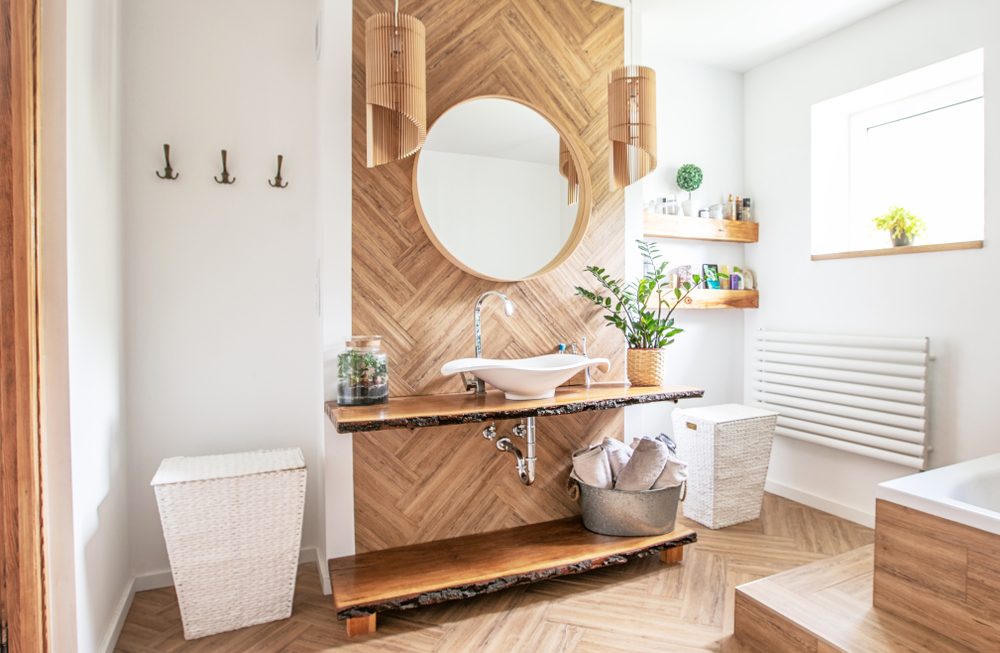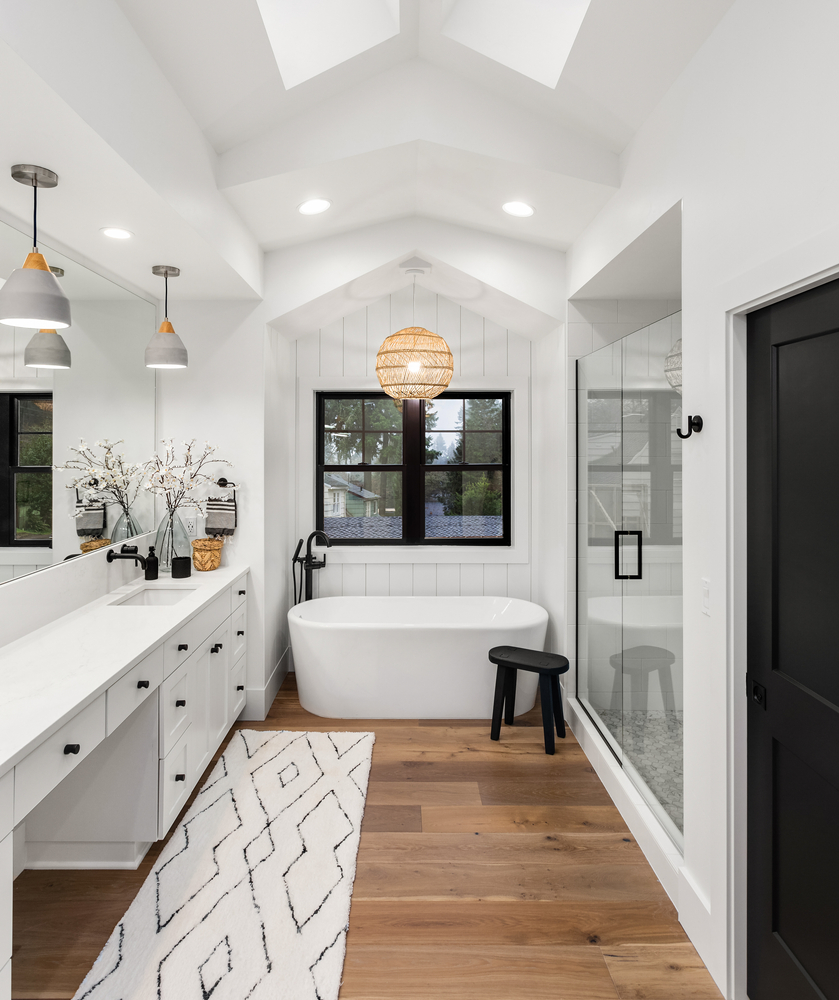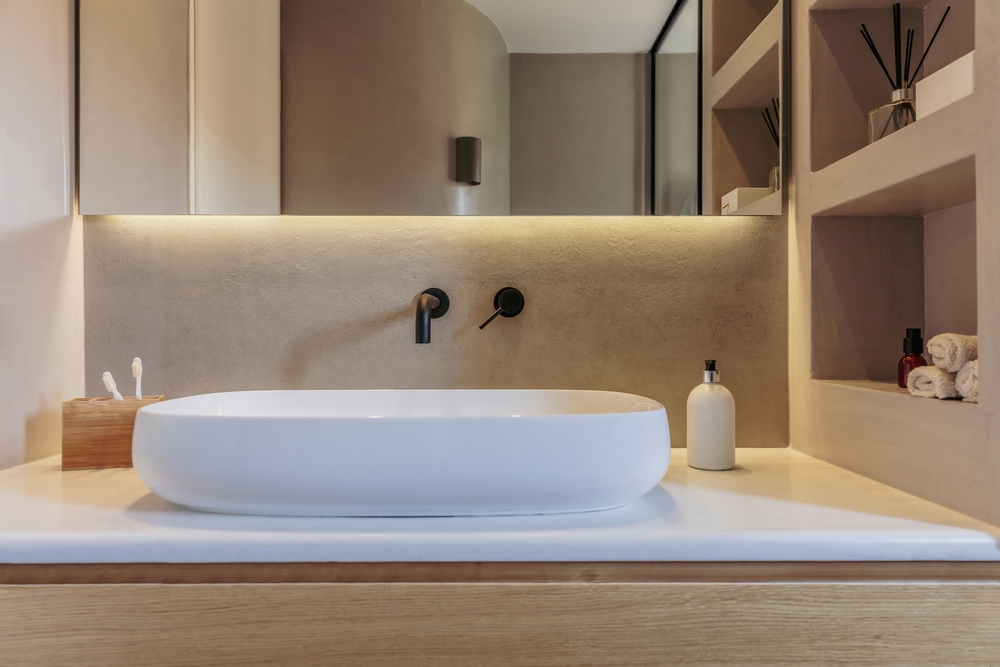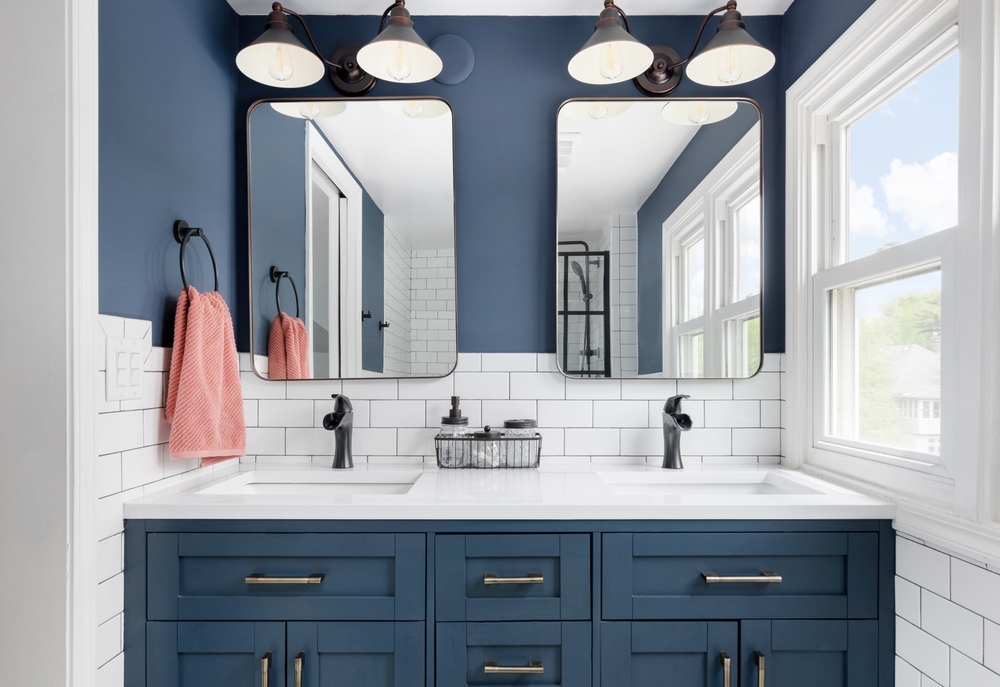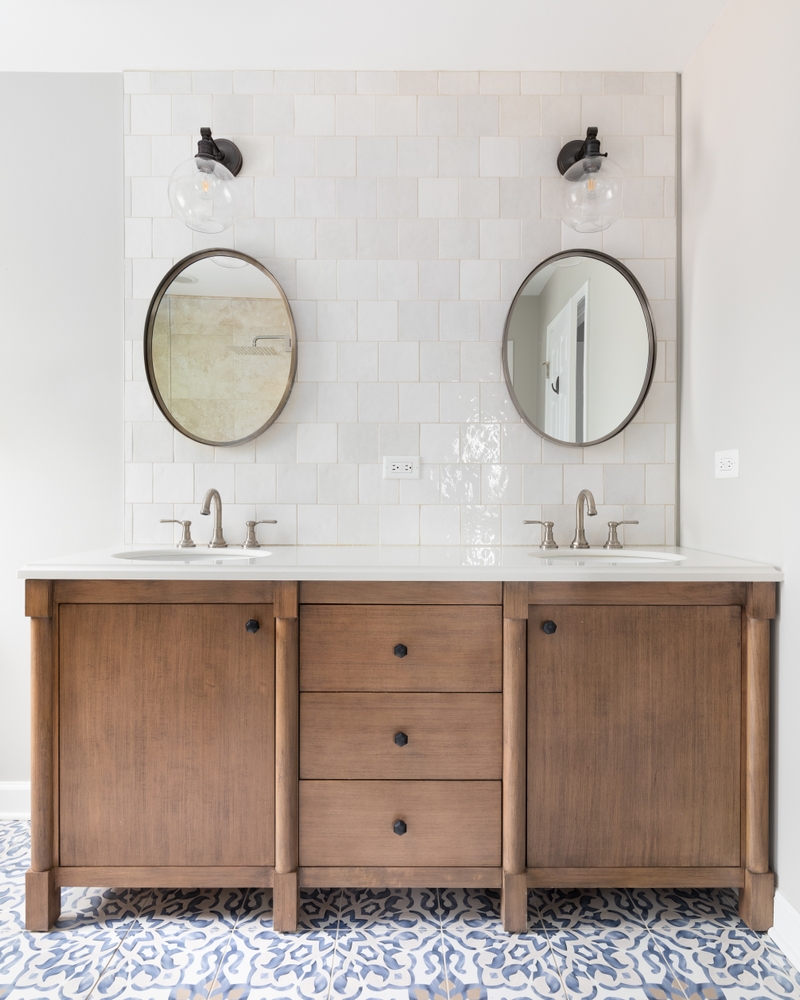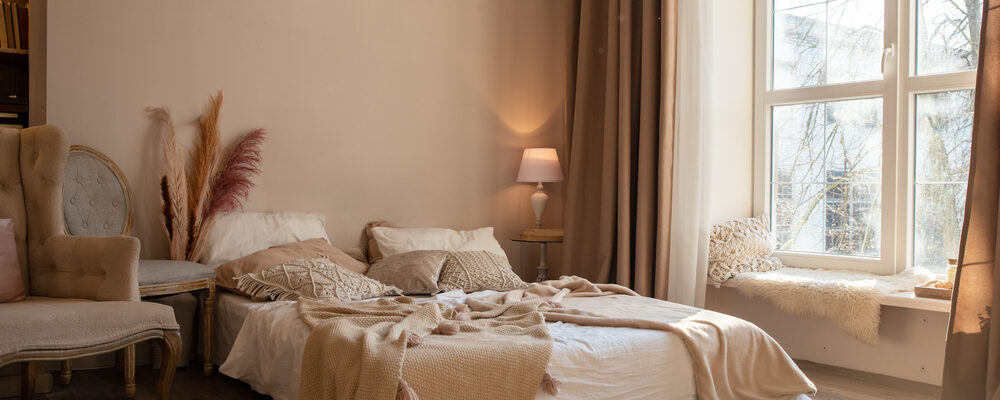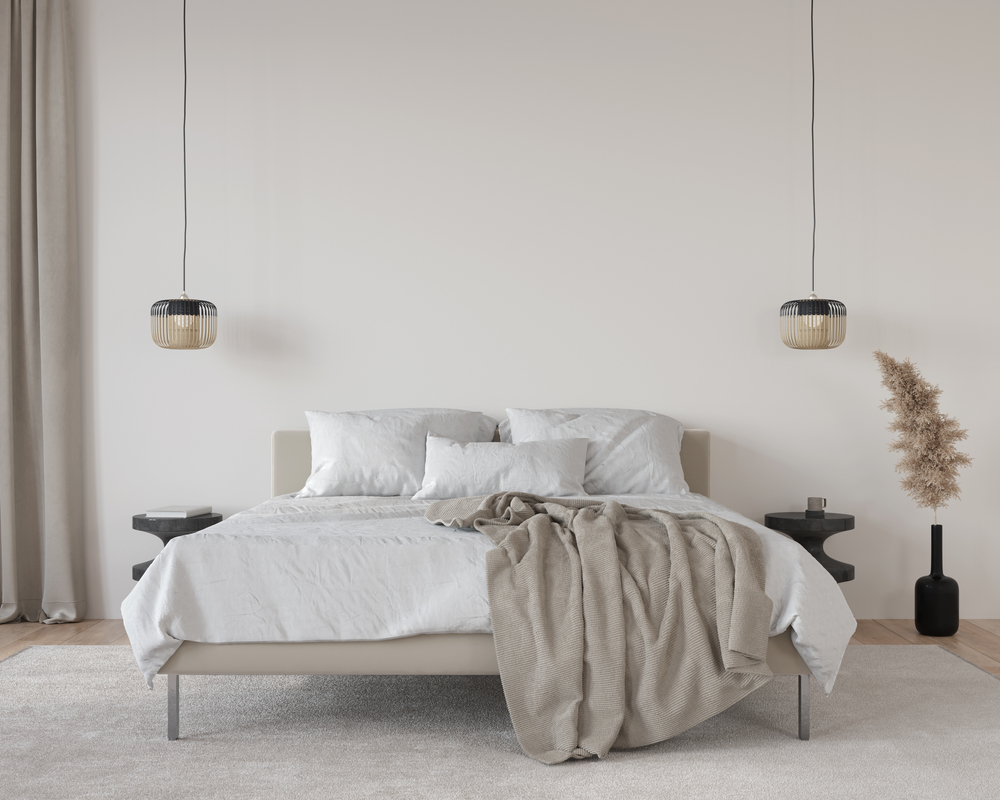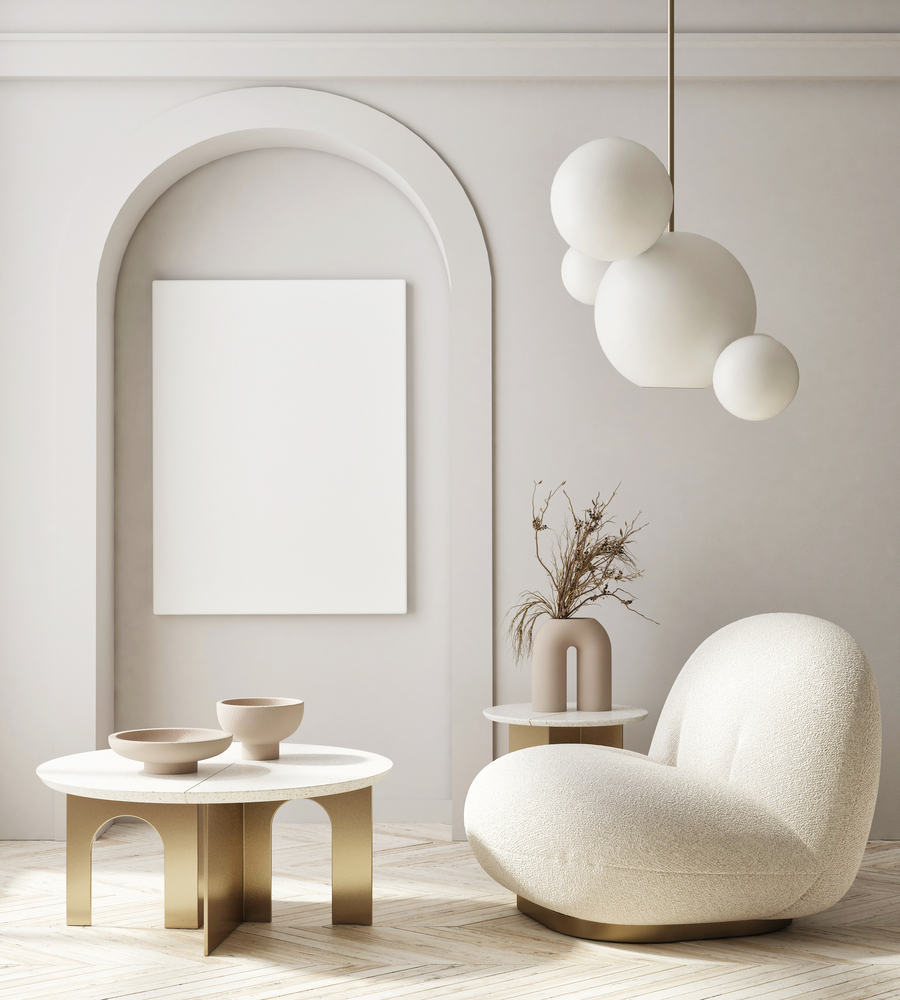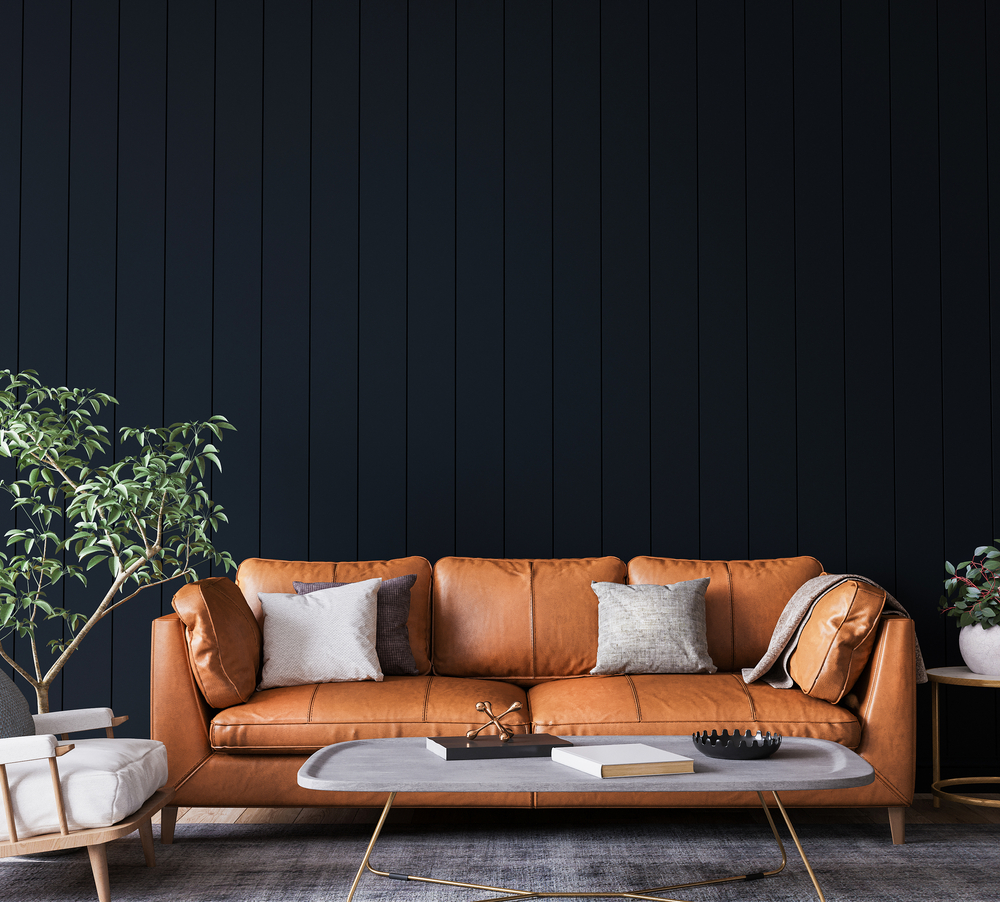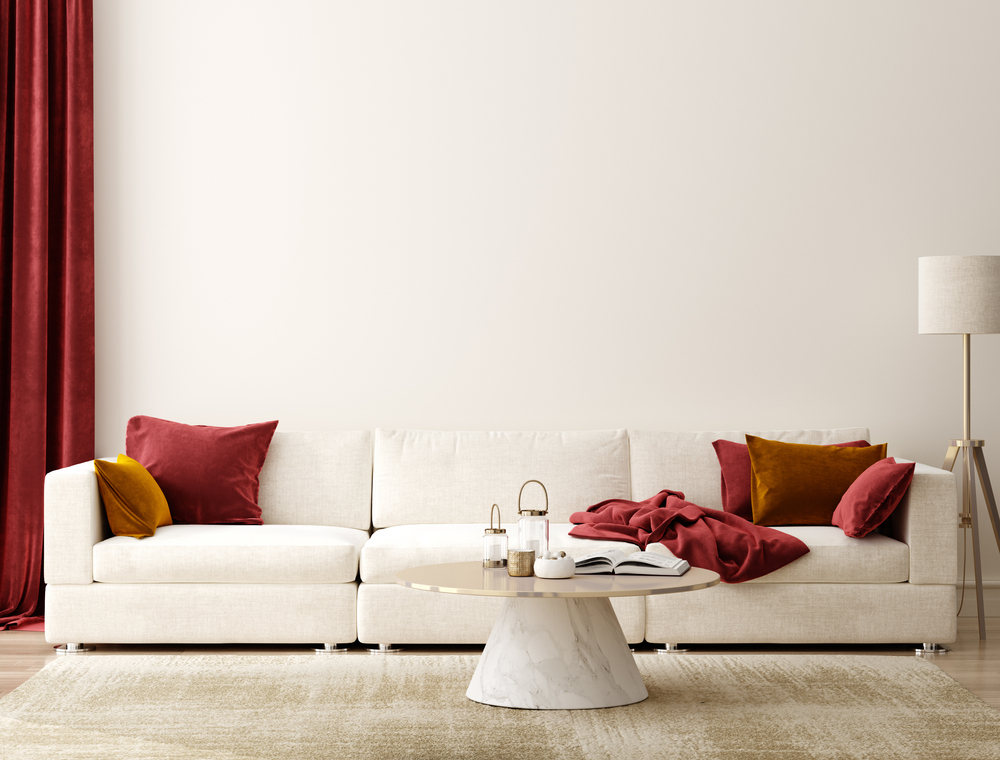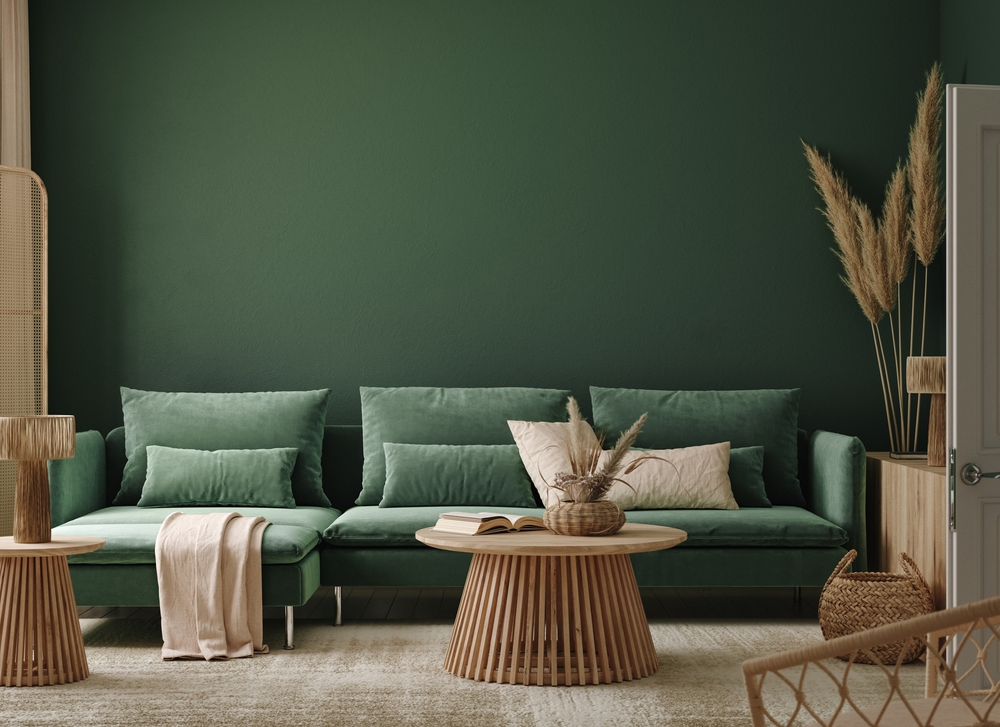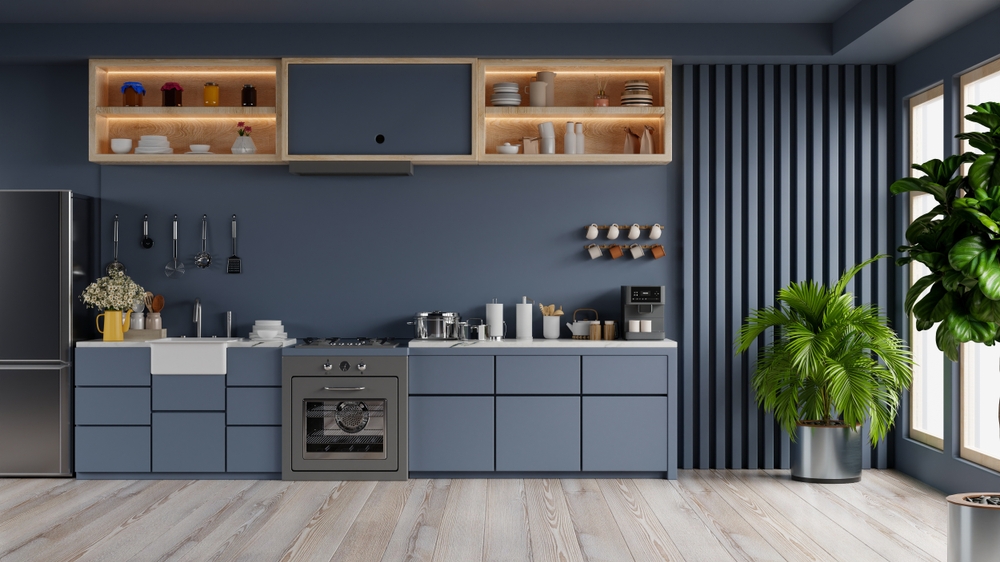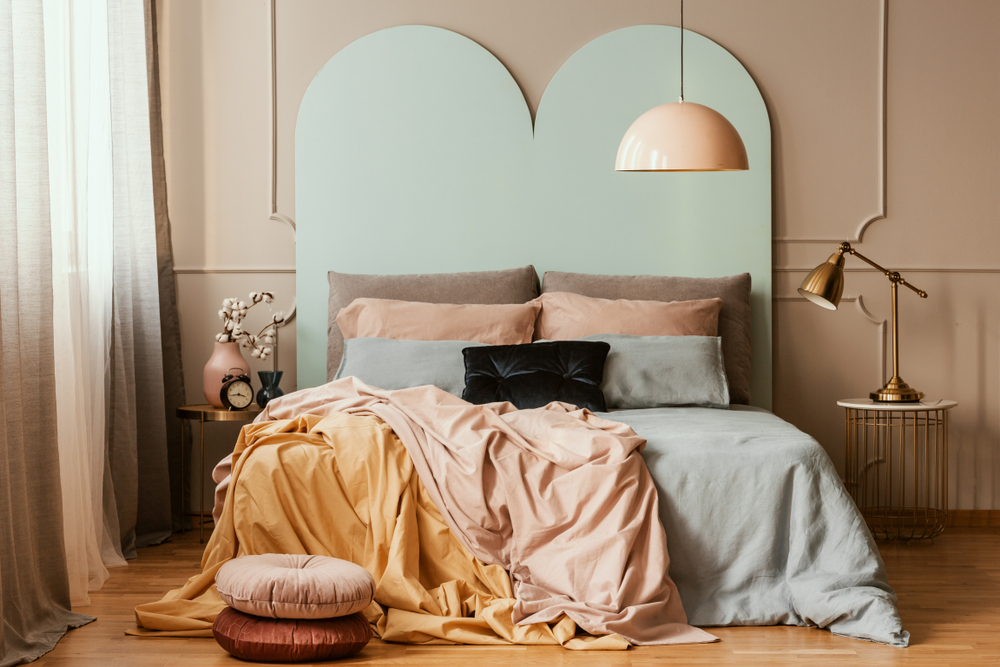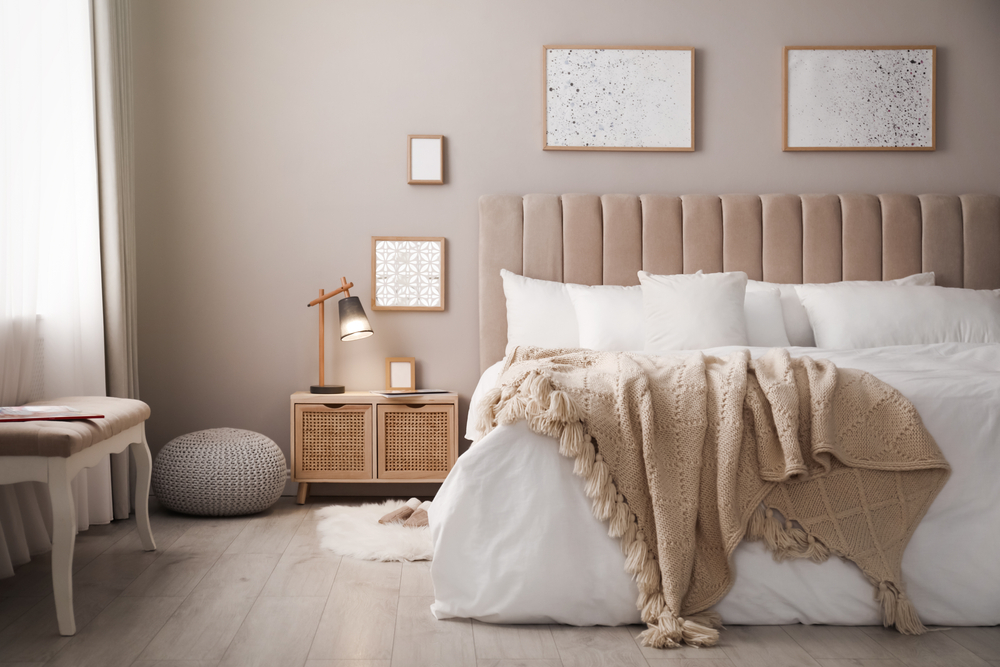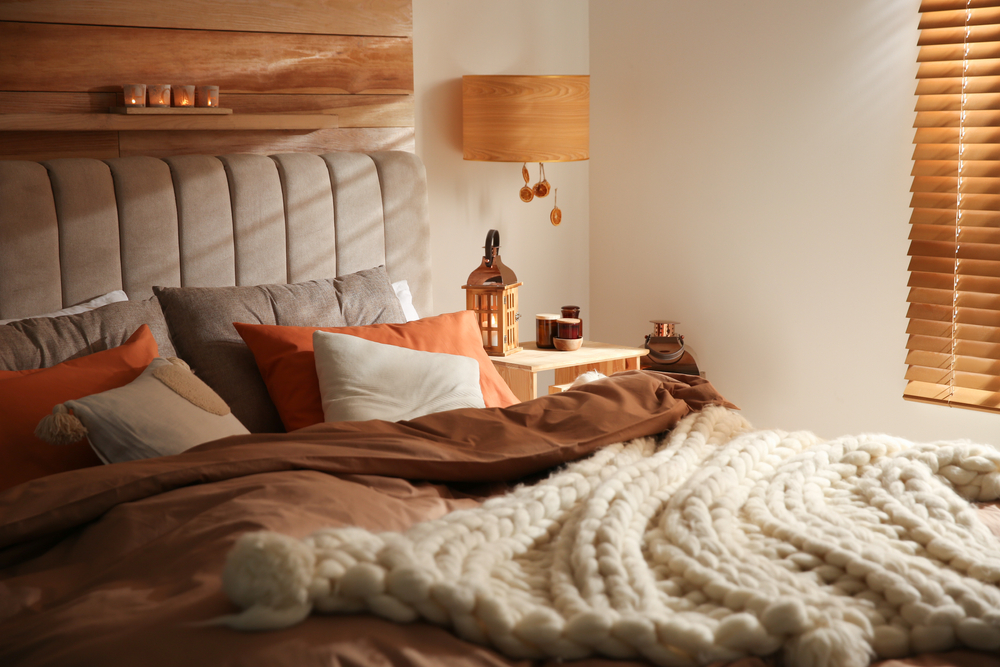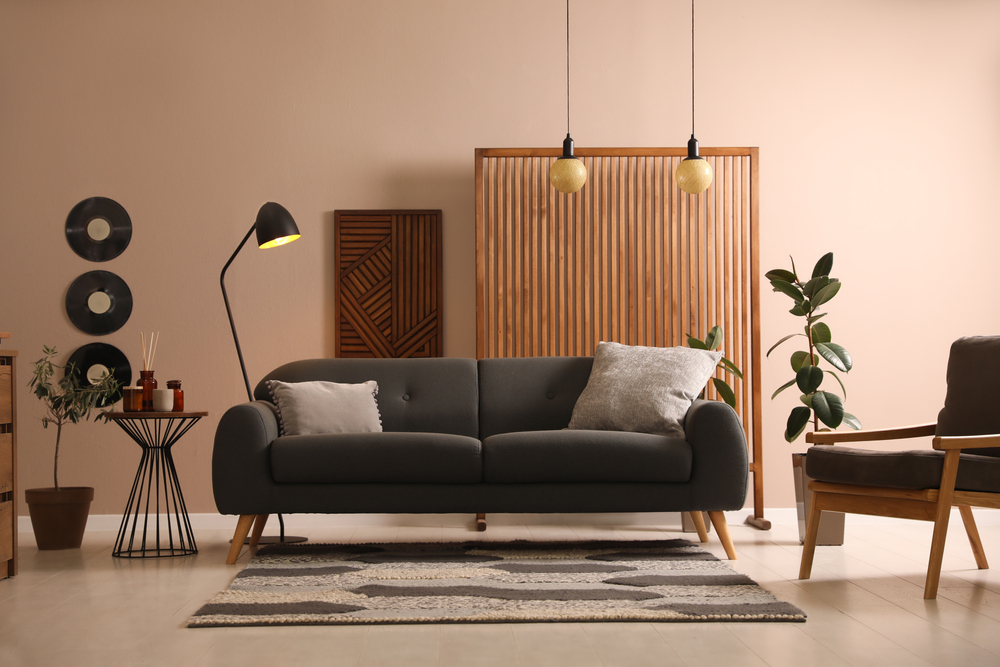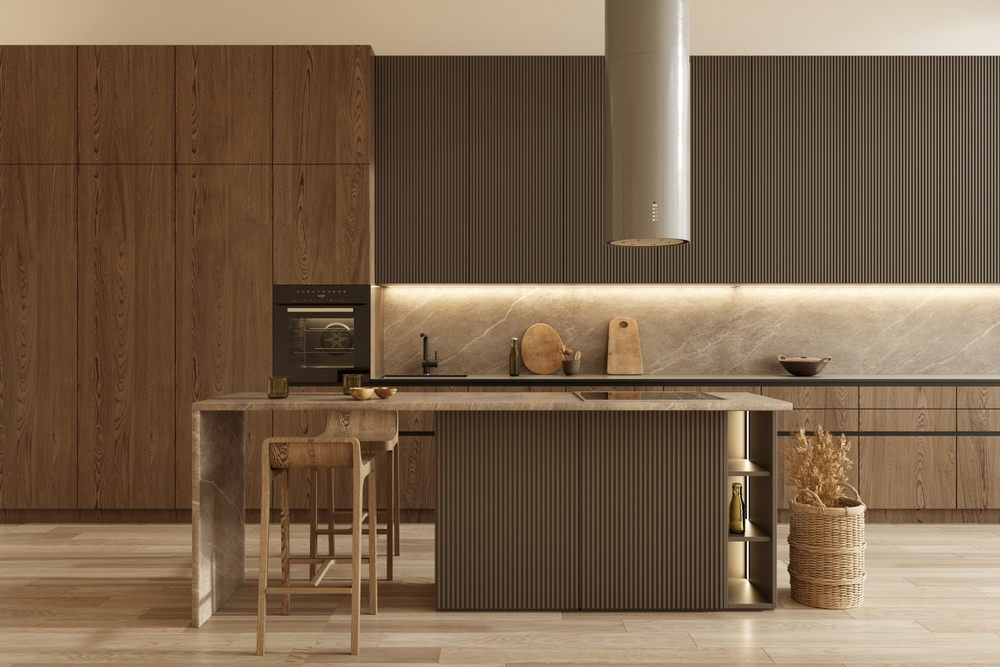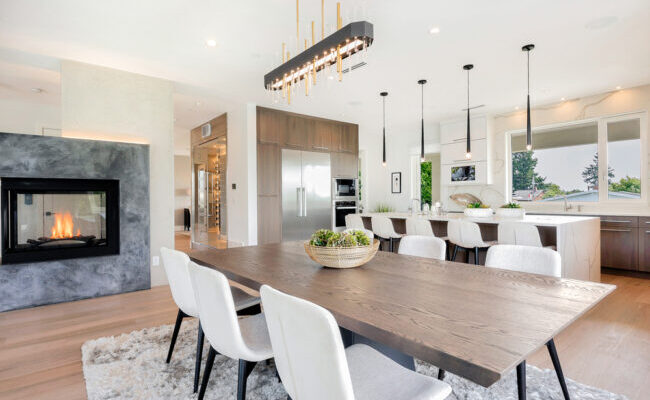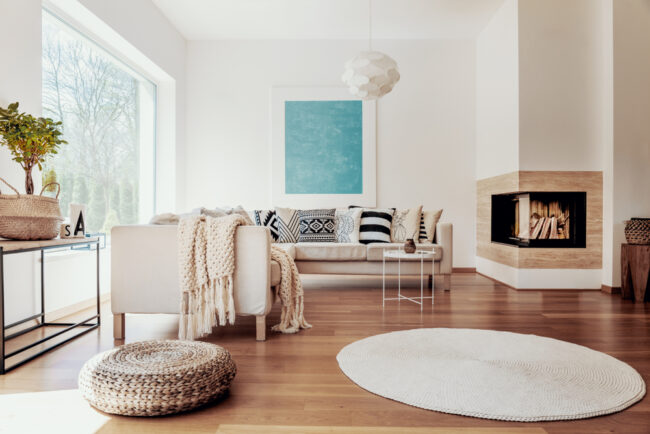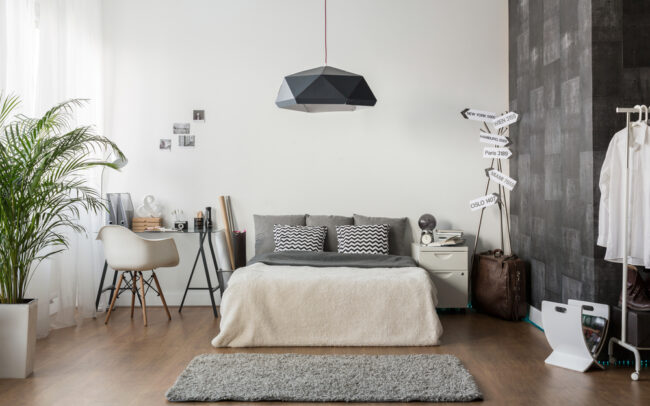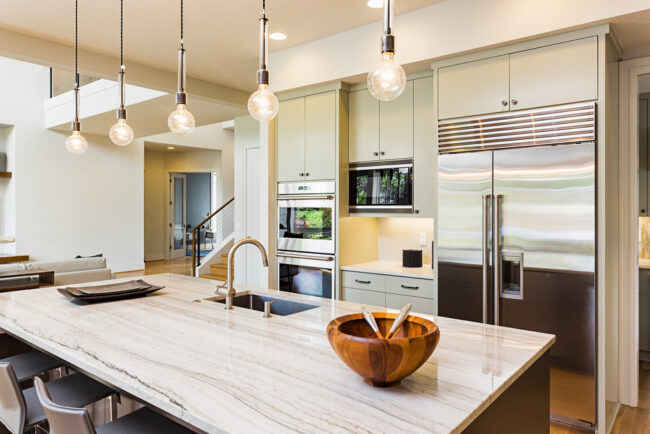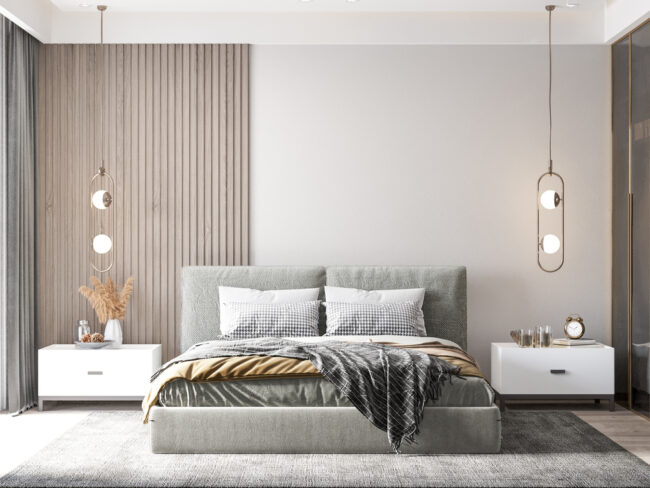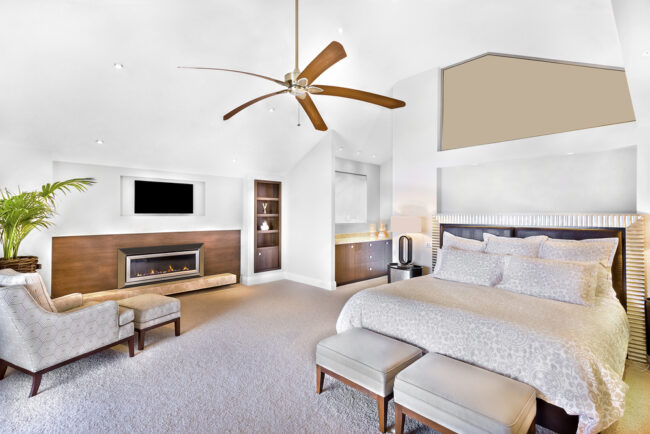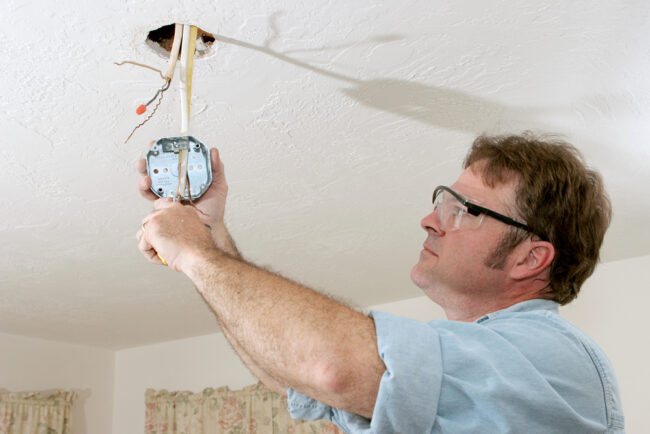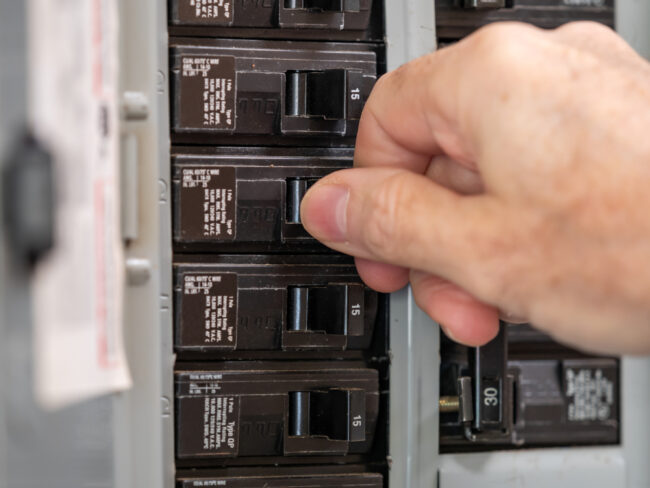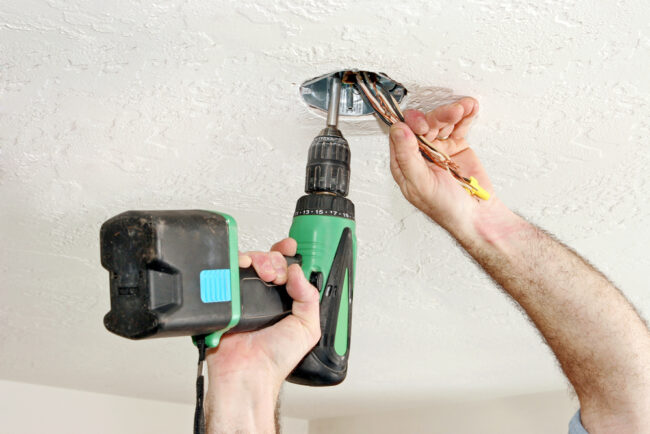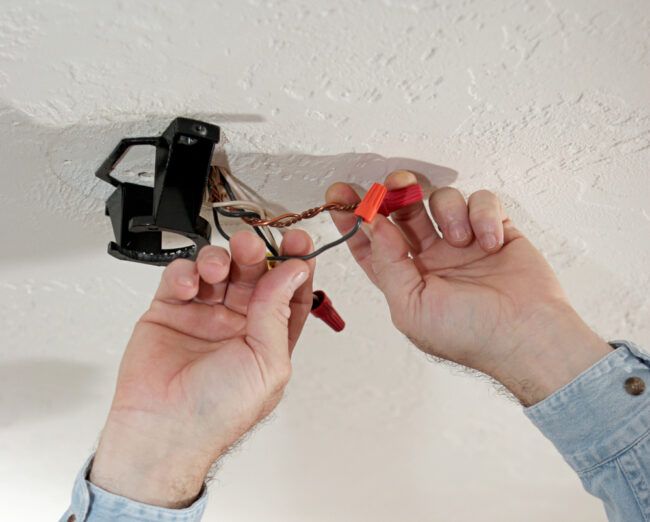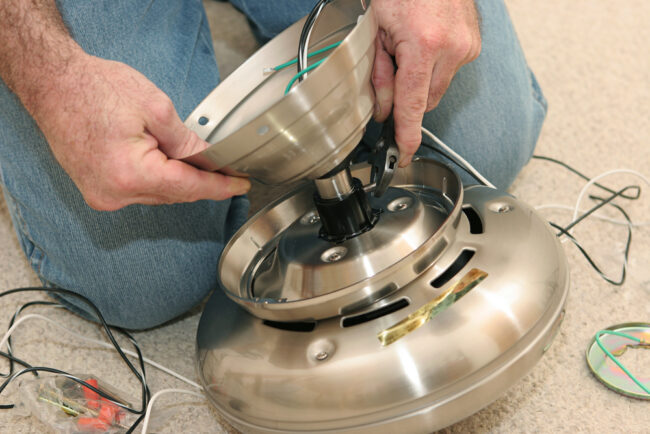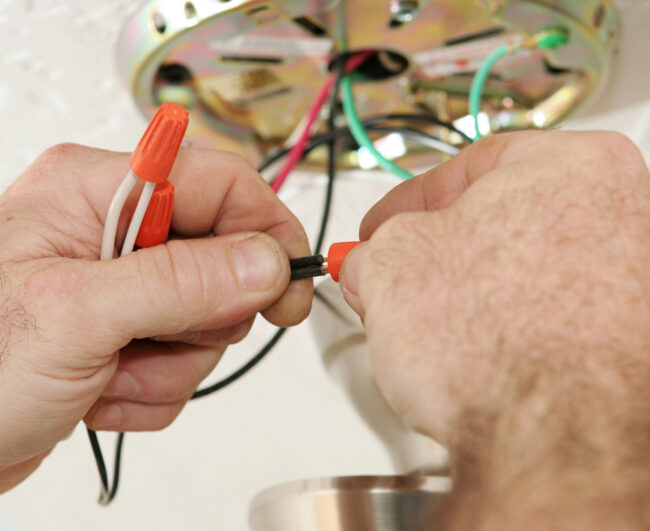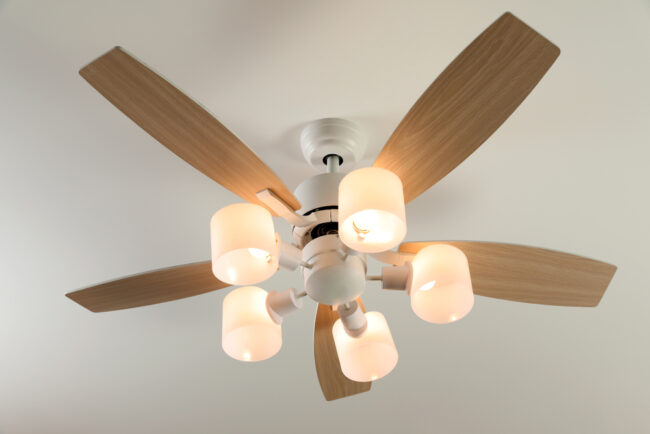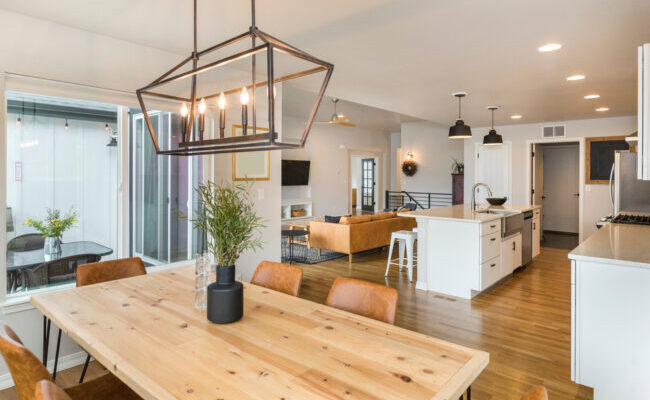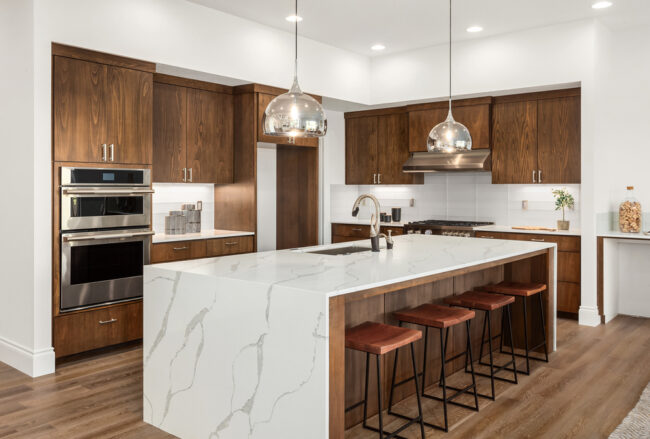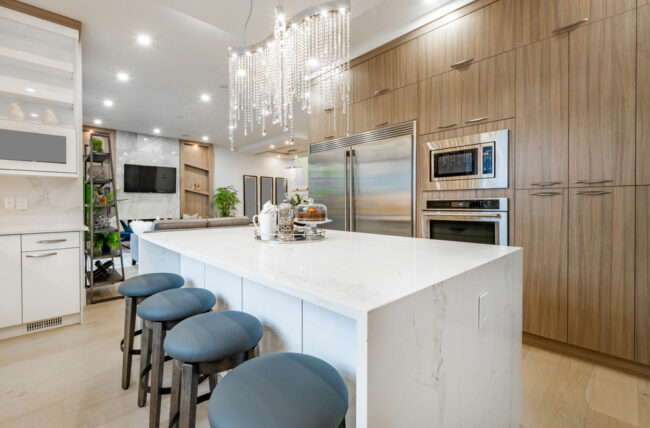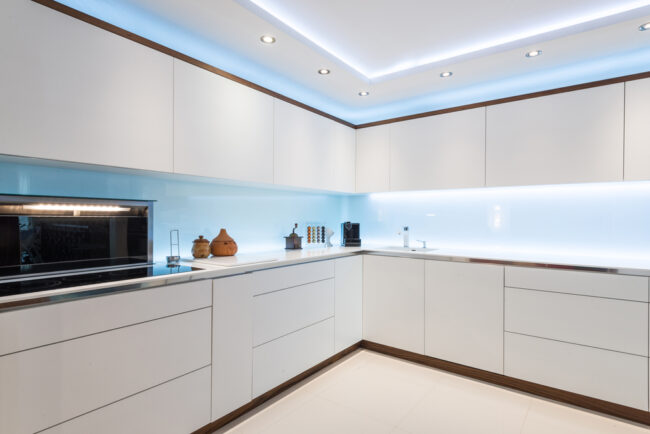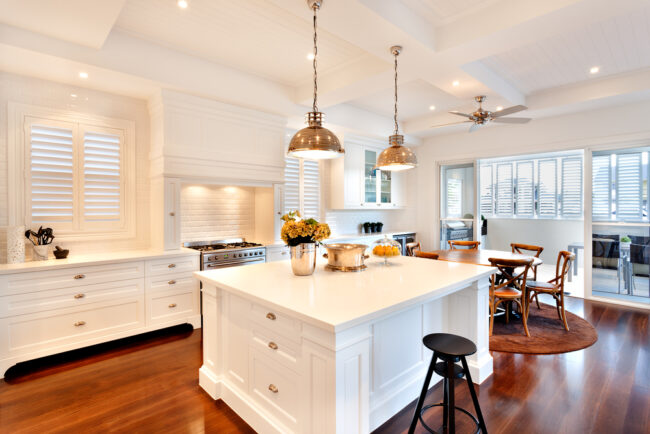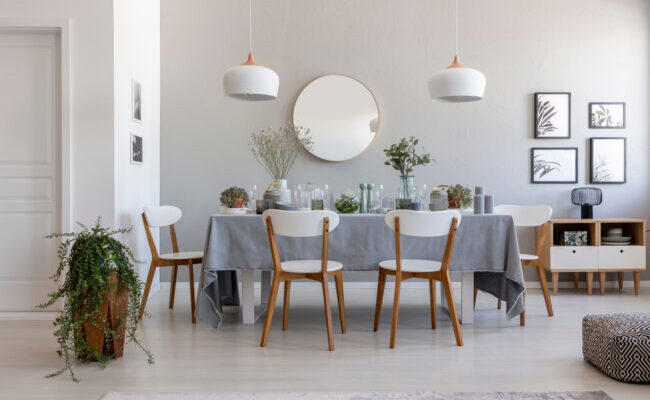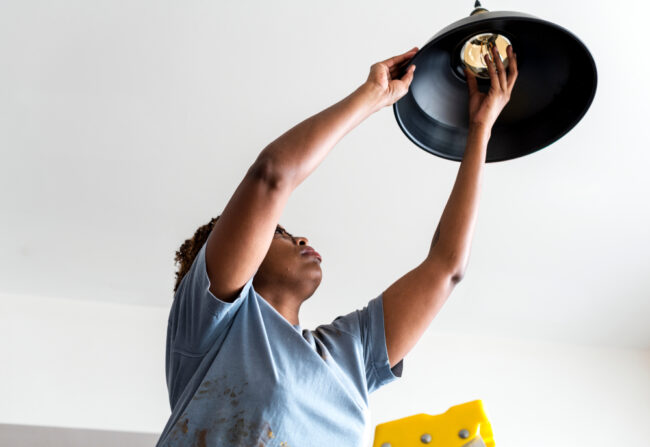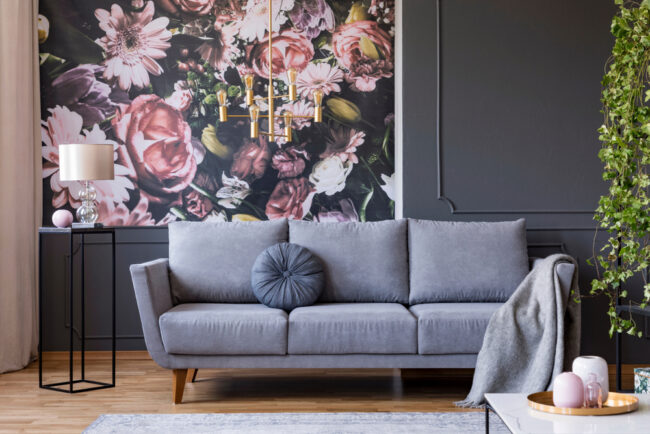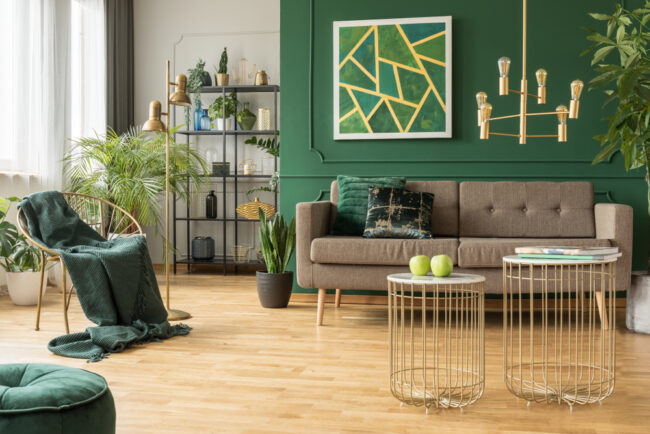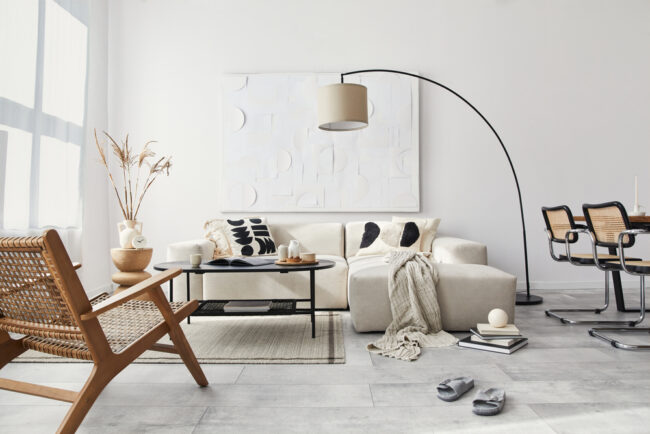Do you have a hallway that feels disconnected from the rest of your home? Does it feel like dead space that could be more useful or interesting, but you’re unsure what to do?
We get it. Hallways can often be long and dark and usually have little open wall or floor space. But that doesn’t mean it has to be dull, dead space!
This article will cover ten ways to brighten up your hall, so you can love walking through your entire home. Of course, not everything will fit in every hallway– but remember that great design is all about layering. Try mixing a few elements from this list to get a polished, inviting hall or entryway.
1. Paint
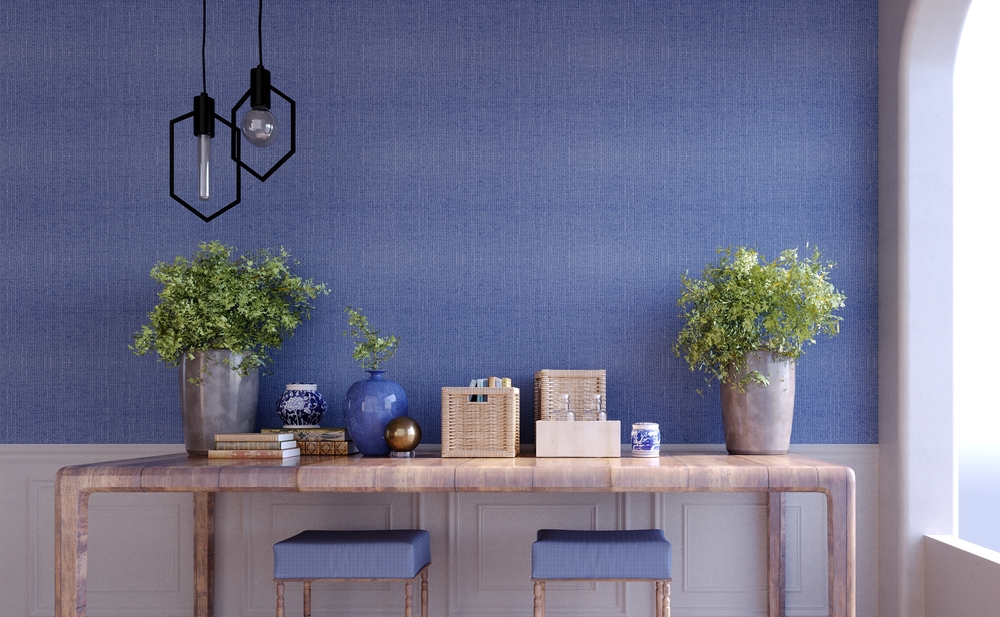
Changing up the color palette of your hallway is an easy way to create interest– without taking up space. You can paint the walls your favorite color, get an exciting runner rug, or install a cool light fixture. This strategy is sure to surprise your guests and make the walk to your room much more enjoyable.
Why you’ll love it:
- Great for small spaces
- Few tools and no special skill sets
- Inexpensive
Need help choosing a color? Then use color psychology to match the vibe of where the hall leads.
2. Patterned Wallpaper
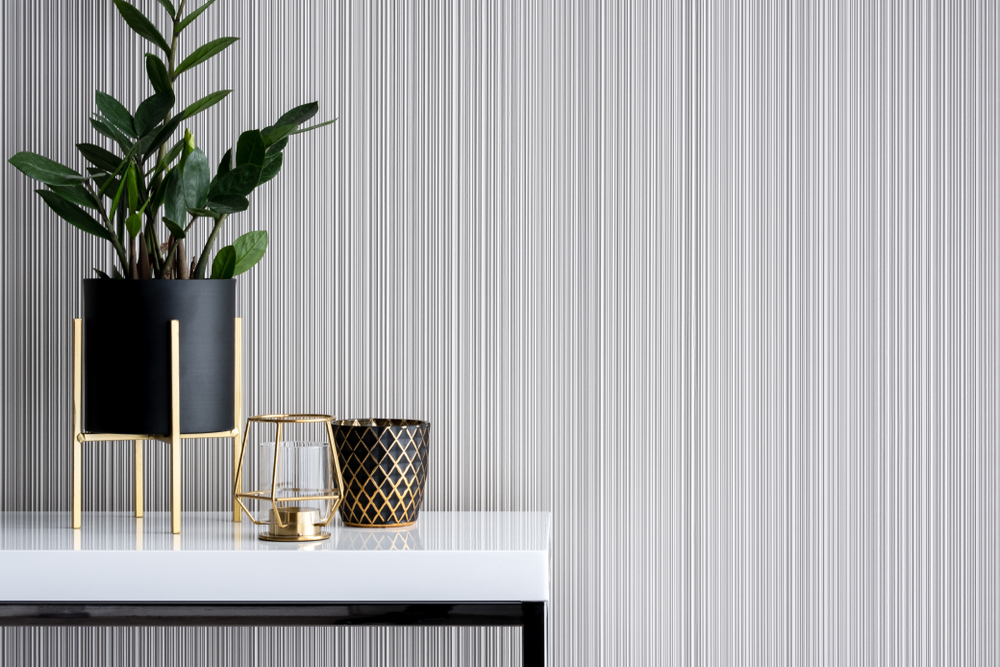
If painting isn’t your thing, or if solid colors just won’t cut it – then try mixing it up with patterns! It’s a great way to add dimension to a room. Wallpaper is an easy way to refresh your walls (or doors) without needing much skill.
Why you’ll love it:
- Endless choices, from minimalist to maximalist
- Wallpaper selection for all skill levels
- Faster than custom paint jobs
Renting? No problem! You can still customize your walls with removable stick-on wallpaper!
3. Wainscoting

If you want to look subtly expensive, then Wainscoting is a great route. Adding geometric elements with trim gives your walls texture and interest without complications. They’re especially great for stairways or hallways since they don’t occupy any floor space.
Why you’ll love it:
- Few tools required
- Materials are relatively inexpensive
- Customizable dimensions for your space
Don’t want to buy a table saw for the project? Measure ahead of time, then have the pieces cut at the hardware store.
4. Mirrors
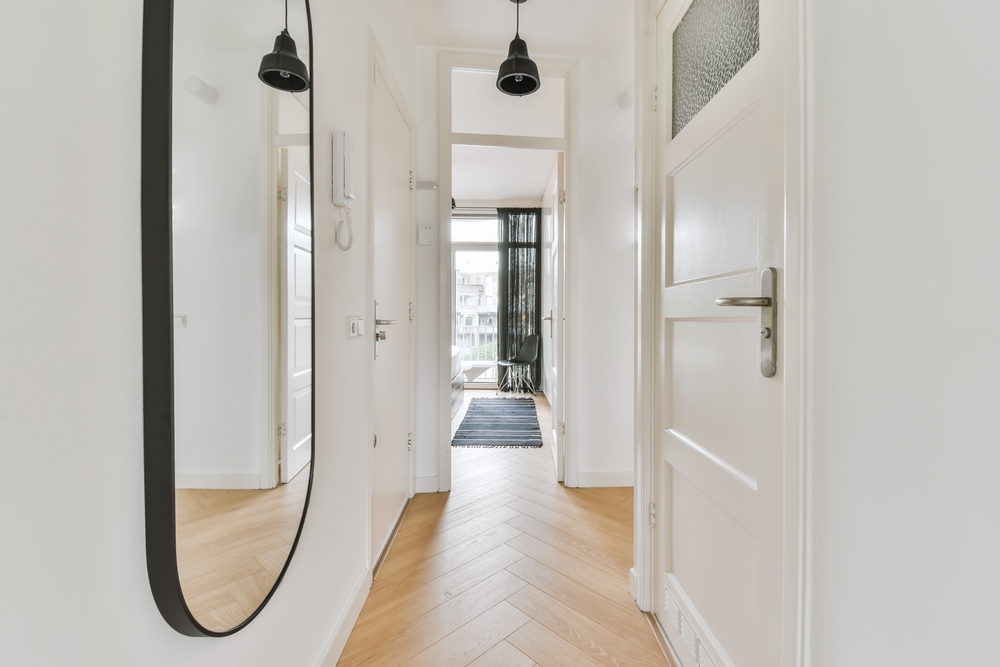
Mirrors are genius design elements. Playing with the style of the frame and the shape of the mirror gives you a lot of room to add personality to your walls, but the best part is that they can make any space feel bigger and brighter.
Why you’ll love it:
- Fits available wall space– big or small!
- Makes any space look larger by reflecting light
- No special tools or skills required
Don’t have a lot of wall space? Then try finding small mirrors and hang them as a collection– art over function.
5. Gallery Wall
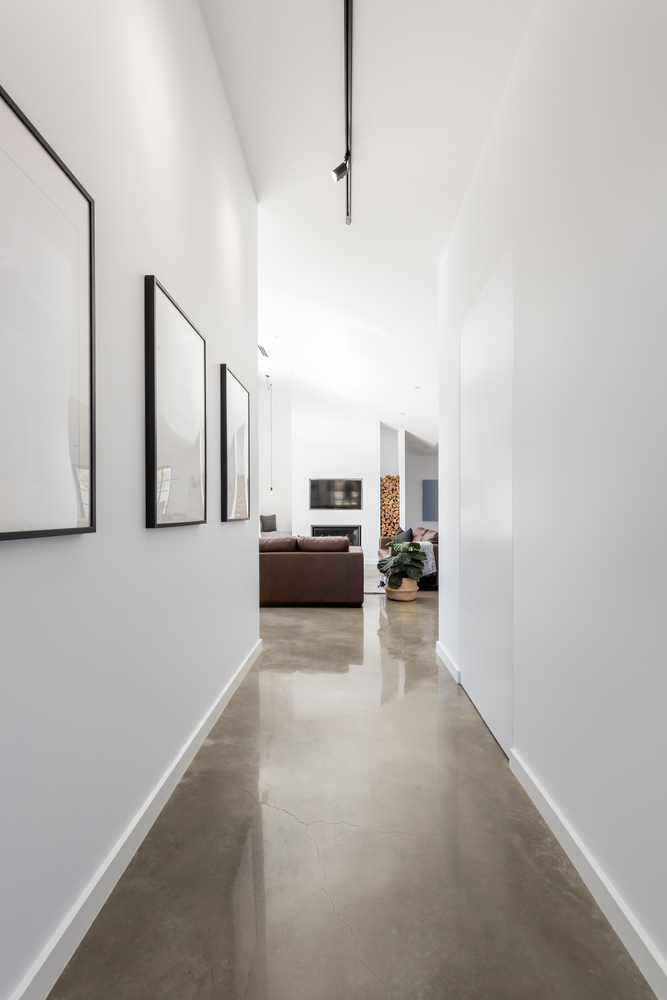
Even with a lot of doors, most hallways have a stretch where you can stash a mini-gallery wall. Class it up with sconces or track lighting, and then you’ve got a casual museum experience.
Why you’ll love it:
- Easy to refresh
- Frames provide a second level of design
- Easy to customize and install
Switching out art with the seasons will add intention to your design and help your space reflect your mood.
6. Lighting
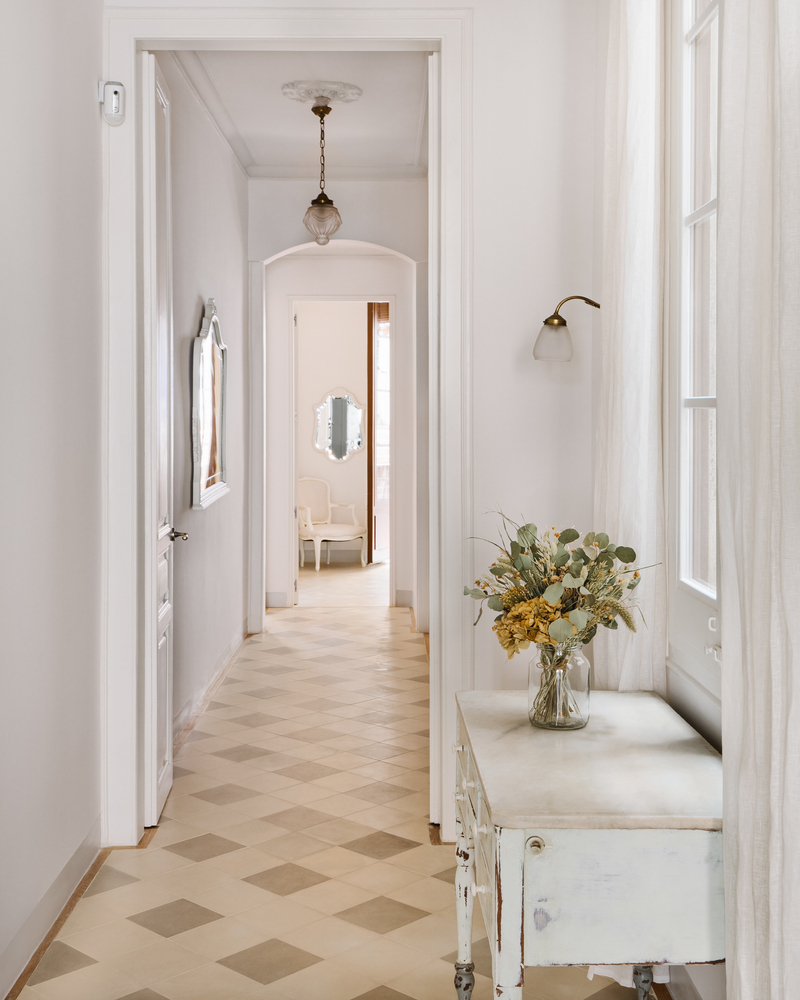
Play with the lighting of your hallway to take away the gloom of a confined, windowless space. This designer used a vintage pendant in the main hall with a complimentary sconce to create a cozy nook. These simple touches take the color palette and existing decor to round out “French countryside” vibes.
Why you’ll love it:
- Updating builder-grade installs immediately elevates the space
- Replacing existing fixtures doesn’t require professional skill
- LEDs light baseboards for nighttime vision and a luxury feel
Did you know that LEDs and sconces can come with a plug? No hard-wiring required!
7. Console Table

Console tables solve so many interior design headaches. These narrow tables match any style while providing a catch-all for keys, showing off decor and collectibles, and more. Finally, try adding a lamp for a finished look.
Why you’ll love it:
- Thin enough to leave walking space
- Provides storage or decor space
- Layer with art or mirrors above for an Instagram worthy configuration
Try flipping a thrift find to manage costs– a little TLC can give you a unique piece for a fraction of the price.
8. Rugs
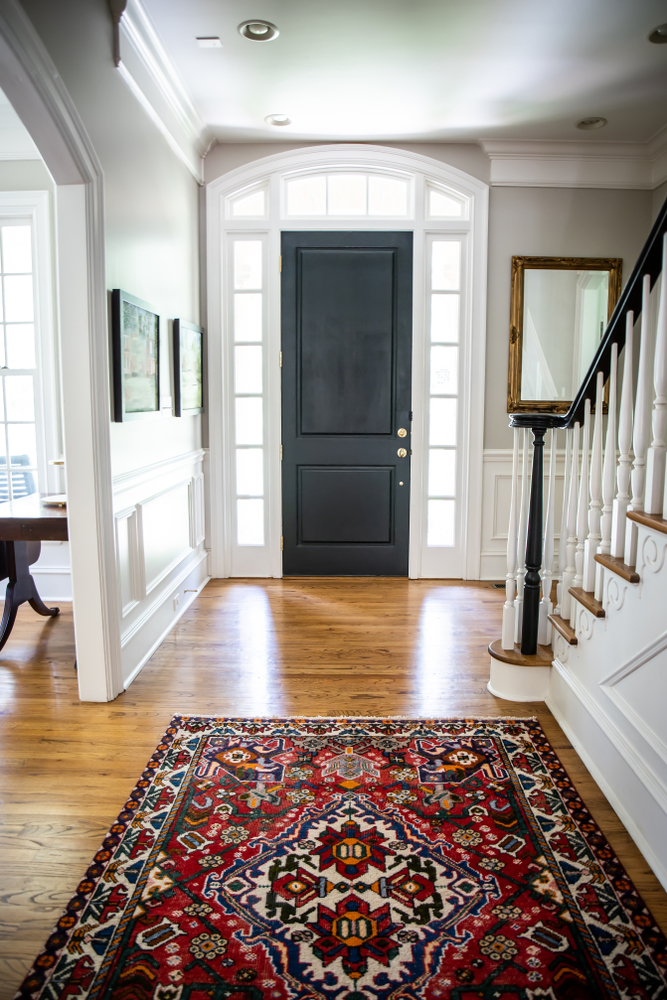
Rugs are an excellent design option, even if you already have carpeted floors. They add texture, color, and pattern to your space. They can make the hall appear larger and protect the flooring underneath them! Get an extra high pile for a cloudlike experience on bare feet.
Why you’ll love it:
- Easily fit any hall without taking up needed space
- Switch out seasonally– no long term commitment
- Find options on any budget!
Have you been itching to take a risk with color and pattern but can’t commit? Rugs seem to be an exception to the rules, so go for it!
9. Seating
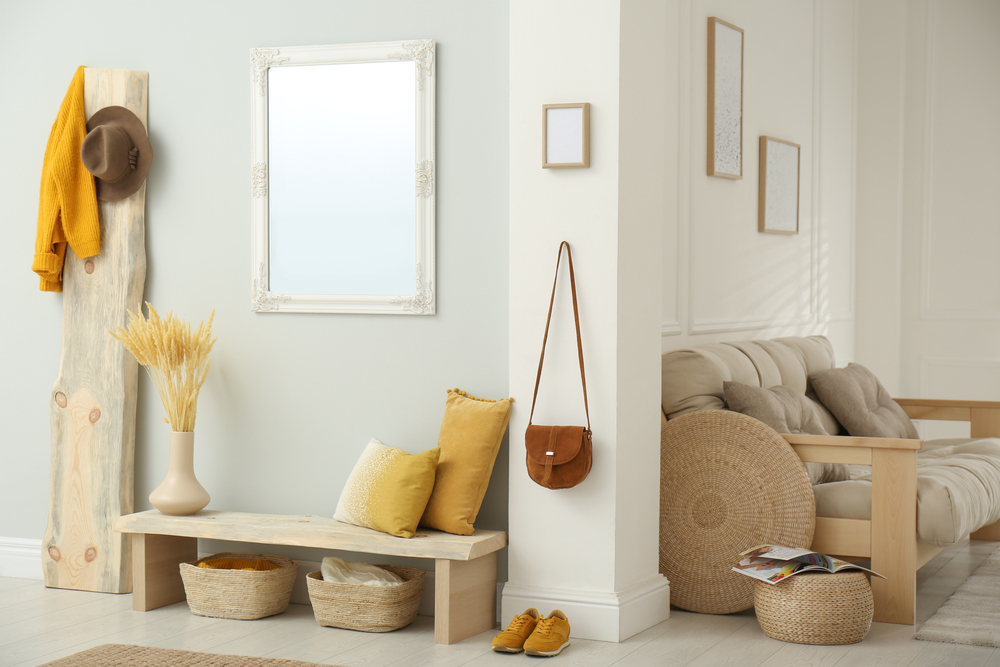
Benches, chairs, or stools– a place to sit makes all the difference. Seating adds excellent functionality to your entry hall and offers a new design element at the same time. You can layer it with decor, position it under shelves or mirrors for layering, or even have it double as storage.
Why you’ll love it:
- Combines design with function– get space for putting on socks or shoes
- Layer with pillows or blankets for added texture
- Use an armchair or stool in corners if there isn’t room in the walkway
Use the material of your seating for an unexpected surprise– metal in a soft space, velvet in a minimalist zone, or wood in an industrial realm.
10. Shelves

Great design is all about layering different elements. Floating shelves provide a place for new decor without taking up valuable walking space. You can play with the shape of your shelves for added interest!
Why you’ll love it:
- From planks to grids to honeycombs – you can customize your shelves any way you like them
- Need very few tools to hang them
- Try corner shelving for tight spaces
Can’t find what you like? Try your hand with a TikTok or Pinterest-inspired DIY project!
———————————-
Having trouble choosing what to highlight in your redesign? The dedicated experts at Illuminations can help you pick the perfect, show-stopping light fixtures for your design. Contact us today to get started on your grandmillennial refresh!
